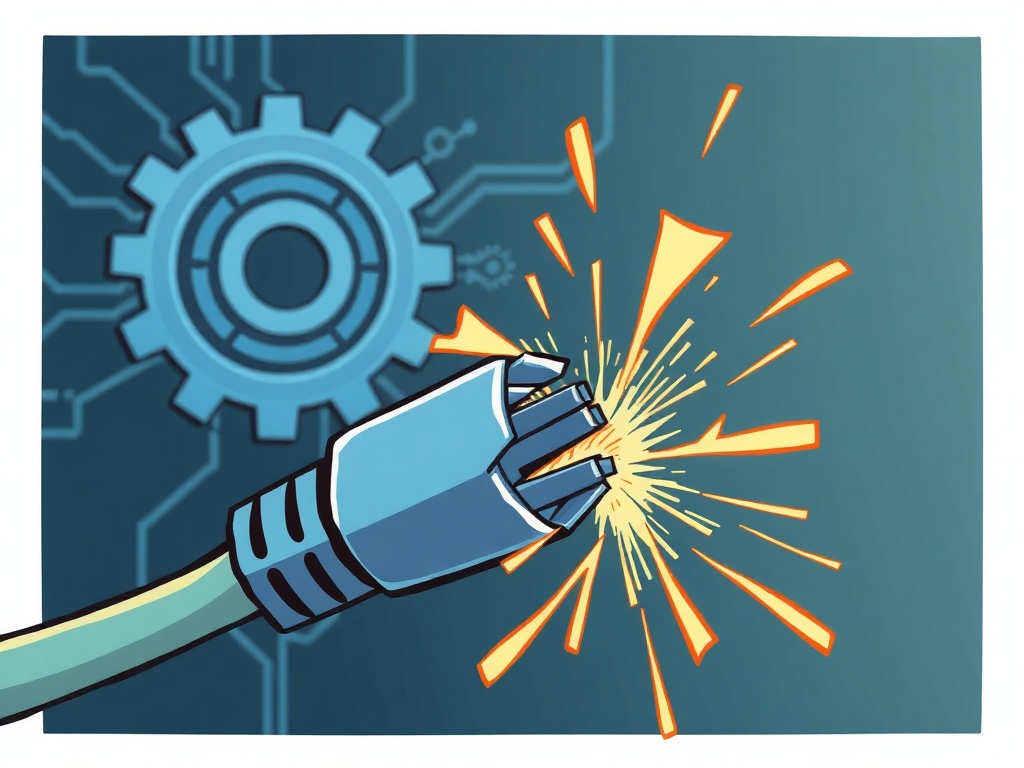BitcoinWorld

Base Network Outage: A Critical Look at the Sequencer Error
The digital world of cryptocurrencies often moves at lightning speed, but even the most advanced systems can hit unexpected bumps. Recently, the Base network outage caused a temporary halt, sparking discussions across the crypto community. This incident serves as a crucial reminder of the intricate technicalities that underpin our decentralized future.
What Caused the Coinbase Base Network Outage?
On a recent Tuesday, Coinbase’s Layer-2 network, Base, experienced an unexpected 33-minute halt in its block production. This disruption wasn’t due to a malicious attack but rather a critical internal system failure. The active sequencer, a vital component responsible for ordering transactions, began to lag.
An automated internal system, designed to maintain stability, promptly initiated a switch to a backup sequencer. However, this crucial transition failed. The primary reason for this failure was an incomplete sequencer configuration on the backup system. Consequently, the network found itself unable to process new transactions or produce new blocks, leading to the brief but significant outage. This incident highlighted the delicate balance required for continuous operation within a complex Layer-2 blockchain environment.
Understanding Layer-2 Blockchain Challenges and Network Stability
What exactly is a Layer-2 network like Coinbase Base network, and why are sequencers so important? A Layer-2 blockchain is built on top of a main blockchain (like Ethereum) to increase its transaction throughput and reduce costs. It processes transactions off-chain before settling them on the main chain.
Sequencers play a pivotal role in these networks. They are responsible for:
- Ordering Transactions: Ensuring transactions are processed in the correct sequence.
- Batching: Grouping multiple off-chain transactions into a single batch for efficient settlement on the main chain.
- Submitting Data: Posting the batched transaction data back to the Layer-1 blockchain.
When a sequencer fails, as happened with Base, the entire process grinds to a halt. This directly impacts network stability and user experience, demonstrating the need for robust redundancy and flawless backup systems. Even a short outage can undermine trust and disrupt ongoing operations for users and decentralized applications alike.
Lessons from the Base Network Outage: Ensuring Resilience
The recent Base network outage provides valuable lessons for the broader blockchain ecosystem. It underscores the absolute necessity of rigorous testing and meticulous setup for all critical infrastructure components, especially backup systems. Relying on automated failovers is good, but only if those failovers are perfectly configured and ready to take over without a hitch.
For users, such incidents emphasize the importance of understanding the underlying technology of the networks they use. While brief, this halt meant transactions could not be processed, potentially delaying operations for businesses and individuals on the network. For developers and network operators, the takeaway is clear:
- Comprehensive Testing: Continuously test backup systems under various conditions.
- Complete Configurations: Ensure backup sequencers and other critical components have identical and complete sequencer configuration to the active ones.
- Redundancy Beyond Basics: Explore multi-sequencer setups or decentralized sequencer models to minimize single points of failure and enhance overall network stability.
This incident, though quickly resolved, serves as a powerful reminder that even leading platforms must remain vigilant in their pursuit of uninterrupted service.
What Does This Mean for the Future of Base?
While the 33-minute halt was inconvenient, it’s important to view it in context. The quick identification and resolution of the issue by the Base team demonstrate their operational capabilities. Incidents like these, while challenging, often lead to stronger, more resilient systems as lessons are learned and improvements are implemented. The commitment to enhancing network stability remains paramount for the continued growth and adoption of the Coinbase Base network.
This event will undoubtedly prompt a thorough review of their backup protocols and configuration management, ultimately leading to a more robust and reliable Layer-2 solution. The goal for all decentralized networks is to achieve near-perfect uptime, and every incident, big or small, contributes to refining that pursuit.
The Base network outage, though brief, highlighted a critical vulnerability in its backup systems. A simple configuration error on a backup sequencer brought the entire network to a standstill for 33 minutes. This incident serves as a stark reminder of the importance of meticulous planning, thorough testing, and robust redundancy in the complex world of Layer-2 blockchains. As the ecosystem matures, ensuring unwavering network stability will be key to fostering wider adoption and trust.
Frequently Asked Questions (FAQs)
Q1: What is the Base network?
A1: Base is a Layer-2 blockchain developed by Coinbase, built on top of Ethereum to provide faster, cheaper, and more scalable transactions.
Q2: What caused the recent Base network outage?
A2: The outage was caused by an incomplete sequencer configuration on the backup sequencer. When the active sequencer lagged, the automated switch to the backup failed, halting block production.
Q3: How long did the Base network outage last?
A3: The network experienced a halt in block production for approximately 33 minutes.
Q4: What is a sequencer in a Layer-2 network?
A4: A sequencer is a crucial component in Layer-2 networks responsible for ordering transactions, batching them, and submitting the data back to the Layer-1 blockchain.
Q5: Does this incident affect user funds on Base?
A5: While the outage halted transaction processing temporarily, it did not compromise user funds. The network resumed normal operations after the issue was resolved.
Q6: What steps are being taken to prevent future outages?
A6: Incidents like this typically lead to thorough reviews of backup protocols, more rigorous testing of failover systems, and enhancements in configuration management to ensure greater network resilience.
Did you find this analysis helpful? Share this article with your network to spread awareness about critical blockchain infrastructure and the importance of network stability in the crypto space!
To learn more about the latest crypto market trends, explore our article on key developments shaping Layer-2 blockchain network stability.
This post Base Network Outage: A Critical Look at the Sequencer Error first appeared on BitcoinWorld and is written by Editorial Team





